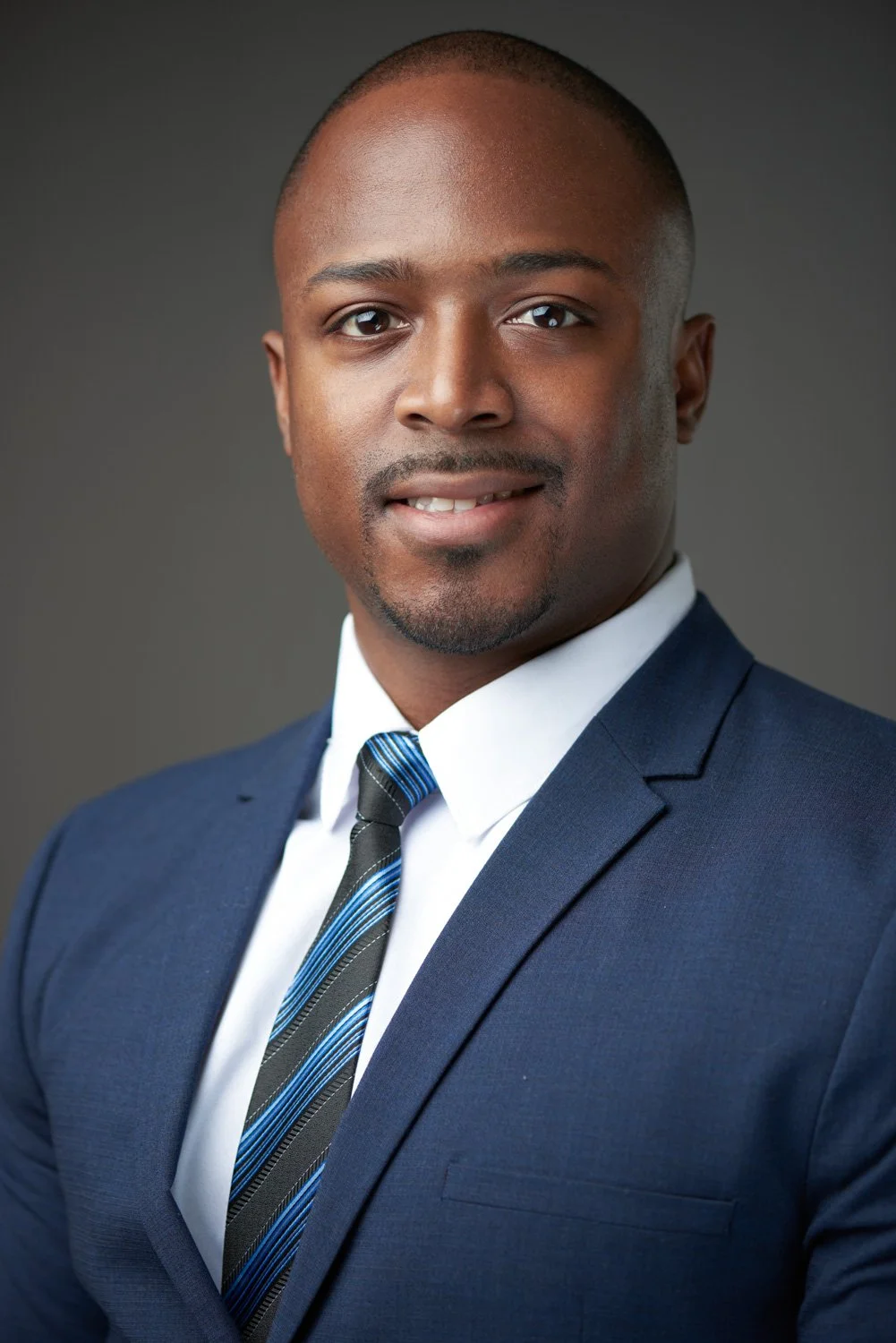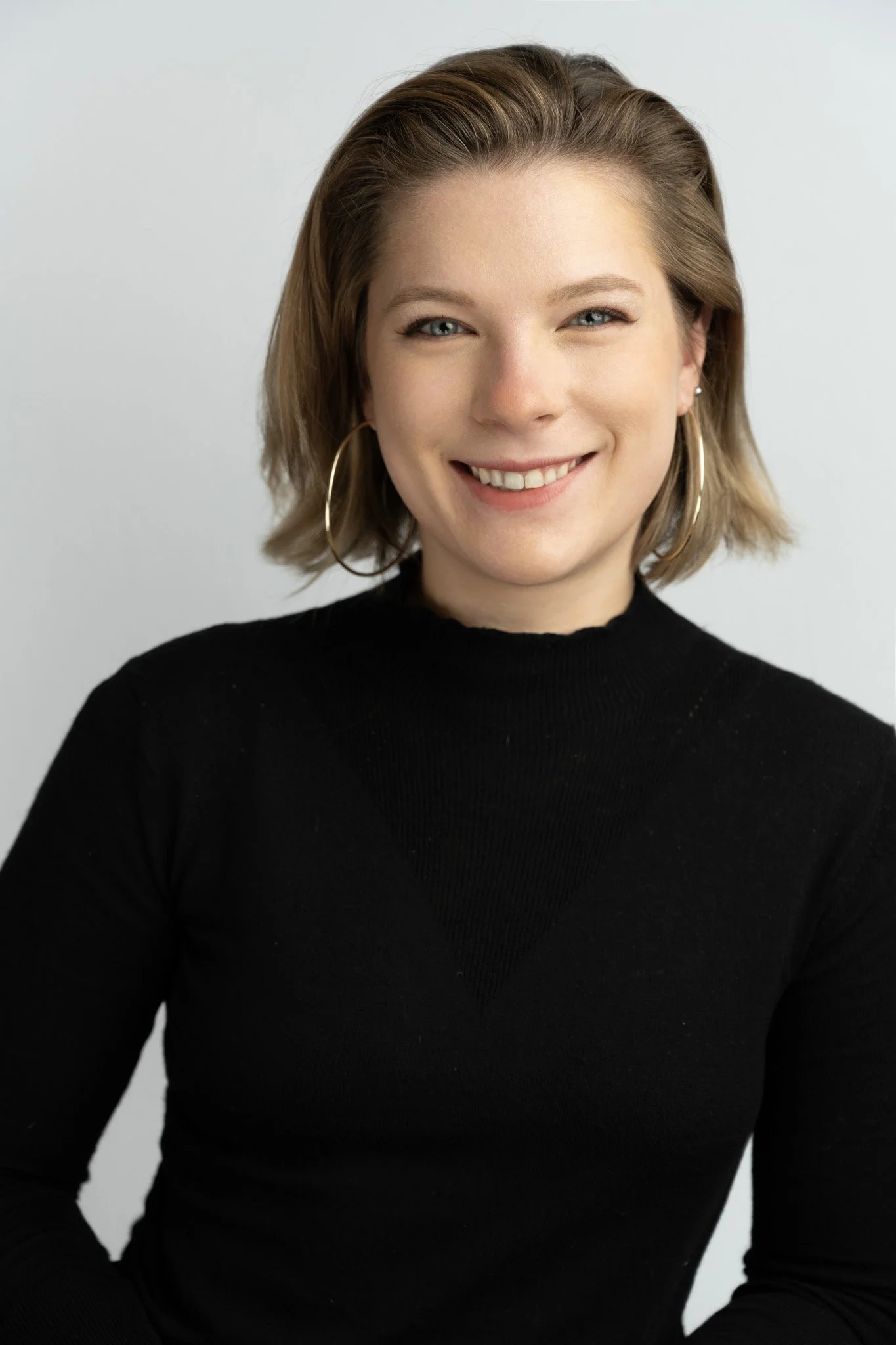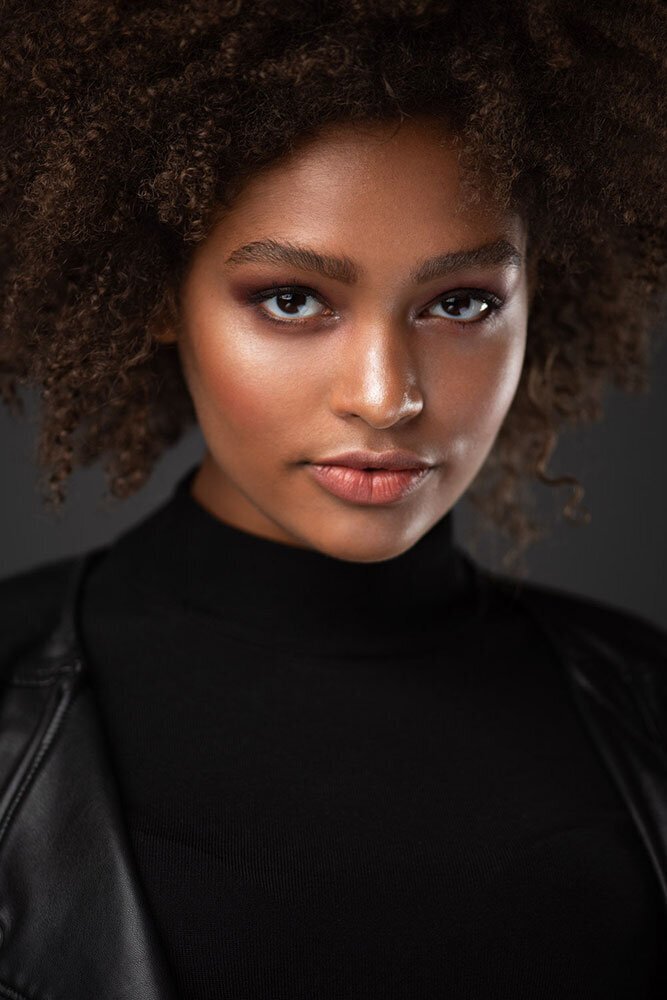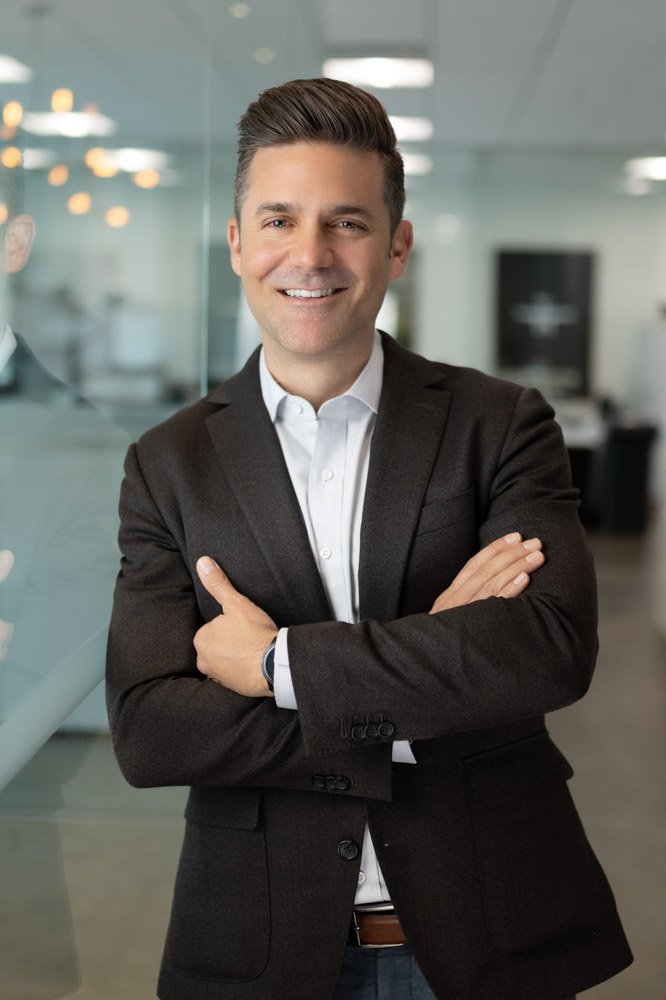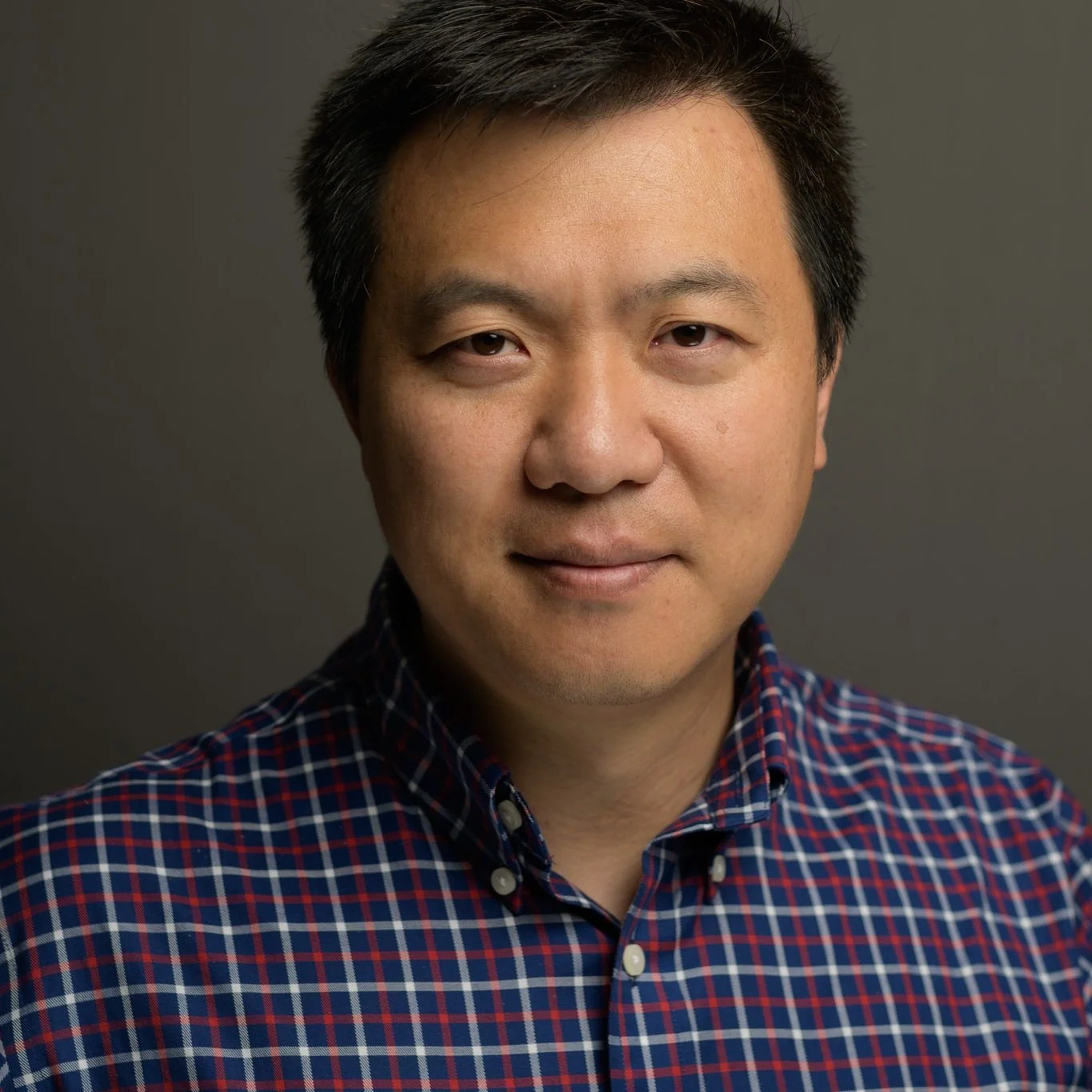Professional Headshot Posing Tips
Last updated on: June 17th 2024
Learning to pose is the best preparation you can do to get the most out of a professional headshot session. Posing for headshots takes practice, and posing for a photographer is a specific skill set. It’s very different from taking selfies with your friends! Use these suggestions to improve your posing for headshots and to capture the professional headshot look you’re going for.
1 ) Know your angles for your headshot
Knowing your best angles is key to posing for headshots. The truth is, everyone has uniquely flattering angles, so you can’t learn to do this from copying how other people pose. It requires trial and error, as well as the ability to judge headshot photos of yourself objectively. It’s easy to fixate on certain facial features that we may not like about ourselves, but, chances are, those are not the features that are most obvious to other people. To be great at posing for headshots or portrait, people need to know how to see themselves from an outside perspective and don’t get caught up in obsessing over what they consider to be their flaws. Emphasizing our best features is much more important than trying to hide our less-than-perfect features. Everyone has good angles and you’ll want to learn how to leverage that to get the best possible professional headshot.
Unless you’re a robot or a cartoon, the two sides of your face are asymmetrical. However, one side of your face is likely more well-proportioned than the other. Orient your ‘good side’ to the camera for the most flattering headshot. Play around with different angles of your chin to capture slightly different orientations of your face. Very small adjustments go a long way in changing how your features look. Experiment with different angles to find the most flattering one for your face. Turn your head slightly to the left or right and see which side you prefer. Tilting your chin slightly up or down can also alter the look of your face. Again, this takes trial and error, so be patient in finding what works best for you. A good photographer will coach you through subtle adjustments in your use of angles to find the most flattering ones. You can also look through photos of yourself that you like and try to determine whether there are any similarities between the angles you used in those photos. Ask for opinions from a few different people about photos of yourself that you like. This way, you can get an idea of how other people perceive your photos. Don’t worry if you get mixed opinions; at the end of the day they are your headshots and you get to make the final call on which photos you prefer. Everyone has different aesthetic preferences. Remember that the goal is to end up with a headshot that you like and that is appropriate for its use.
2) Know your audience for your headshot
What are you going to be using your professional headshot for? Different professional fields have specific looks associated with them. For example, there is a difference between the look of a professional headshot for an actor, a real estate agent, a lawyer, or a corporate professional. Look up examples of headshots within the field you will be using it for and collect a few looks you like. Share these photos with your photographer so that he/she/they know what you like and what you’re aiming for. Remember that these are just examples and you don’t need to try to recreate the poses exactly; it’s more that they serve as a reference to the general vibe.
3) Relaxation is key for a beautiful headshot
It can be intimidating to have your photo taken professionally. Even the best models have to learn how to stay relaxed and comfortable in front of the camera. Getting caught up in self-consciousness can make it difficult to capture your best looks for your headshots. Relax your whole body, even if it’s not in the frame. Tension in the rest of your body will show up in your face, so make sure you’re in a comfortable position and prioritize feeling relaxed. Relax your jaw and mouth: Tension in your jaw or a forced smile can make the headshot appear unnatural. Maintain a relaxed mouth to achieve a more natural and inviting expression. A quick trick for this is to exhale when the shot is being taken. You may not notice that your breathing gets tense when you’re self-conscious or uncomfortable, so check in with a full exhale periodically. It’s so obvious that it’s easy to forget, but breathing freely is the simplest way to keep yourself relaxed. A relaxed and confident look is what you are going for in a professional headshot.
When the photographer clicks the camera, keep on a very slim gap between your upper and lower lip, and keep breathing very slowly through this gap between your lips. This has nothing to do with the notorious “duck face”. It simply helps you relax your mouth and make it look more natural. When smiling, unless it is a dentist’s office commercial, have a beautiful genuine 75% smile, making it believable and not fake. From time to time take a quick break, breathe in, hold the air and breath out fast letting your lips vibrate, as this will give the necessary “reset” and relaxed look to your face.
4) Stunning headshots are all in the eyes
Your eyes are the focal point of your professional headshot. A really stunning headshot that you can’t look away from is a product of the use of eye contact to draw the observer into the personality of the person. Use your eyes to communicate who you are and what you want to portray in your headshot. A piercing look, a soft gaze, a humorous twinkle, deep contemplation - all are beautiful looks for a headshot. Know what emotion you want to communicate and use your eyes to express it. Once you know your angles, play with different expressions in your eyes with the same orientation of your face towards the camera. This can give a variety of looks within the parameter of similarly framed photos. Don’t underestimate subtly here - the eyes are very expressive and we are visually calibrated to pay attention to them. Use this to your advantage by framing your headshot in terms of what your eyes are doing. Unself-conscious eye contact is the best look for a headshot. Ask the photographer to count until 3, when at the same time you who kept your eyes shut, will open them, and the photographer will make a shoot. This helps to keep your eyes expression fresh and alert.
5) Know when to look at the camera when your headshot is being taken
This trick combines the ‘use your eyes’ and ‘relax’ principles: look away from the camera and then look straight at it right when the photo is being taken. Pretend someone you really like just walked into the room and you automatically look up to greet them. This prevents you from trying to maintain unnatural and rigid eye contact with the camera the whole time. Trying to sustain full eye contact for too long doesn’t look natural and will leave the expression in your eyes looking too sharp or vacant - not ideal for a professional headshot. Get used to the timing of when the photo is about to be taken and look straight at the camera just long enough for the photo to be captured. You can look away from the camera in between shots or just keep your gaze very soft. Your “working area” is 45 degrees left and 45 degrees right from the center. Never turn away from the camera during the shooting process and don’t make unnatural poses. Keep it real. Sometimes, if you need a reset, communicate it with the photographer, then turn away, close your eyes, and think of a beautiful place you want to be now or all the amazing deals you will sign after attracting new business with new headshots. Like in the previous point about our eyes, you can refresh the pose by turning to the camera on the count of 3, or even stepping into the shot. It’s like walking back and forth, just one step, tilting your head down stepping away and looking straight into the camera when returning to your spot as if you just ran into your best friend, warm look, positive, reassuring.
6) Use your whole body, even for a headshot
This principle helps with staying relaxed and comfortable. Keep an awareness of your whole body, even when only posing for a headshot. Sit or stand in a way that feels natural to you, some position you assume automatically on a regular basis. Pretend you’re sitting across from a friend at a cafe. Pretend you’re waiting in line and are taking the opportunity to check in with your posture. Like the suggestion for finding the best angles for your face, don’t try to ‘strike a pose’ that you’ve seen in somebody else’s photos. Organize your body in a way that feels the most comfortable for you. Wear your best shoes, that make you feel confident, and remember the sound of your heels walking the streets on the way to success. For women, it is advised to keep their favourite high or slight heels on, as they change the whole posture for the best. Pay attention to your neck. For men, it looks confident when the neck is strong and showing. To stress it – adjust your head o the back and neck to the front. For women it’s the complete opposite – “swan neck” makes a great impression. Shoulders go back, adjust them with a quick shoulder roll, keeping your neck straight and neutral in the back, and move your chin straight forward until you feel your neck stretching. Don’t forget to use your hips, shift weight from one leg to the other, and stay in the “Z” shape, angles are good, even if we only see your upper body - the position of your legs gives you confidence and good angles for the upper body.
7) Capture moments of movement in a headshot
Photos that look the most natural capture moments of movement. Think about posing as brief pauses in a continuous flow of movement, rather than rigid stances that you assume and hold. The key here is to move slowly and make small adjustments. Move your shoulder, the orientation of your chin, and tip your head up and down, but much slower than you think. Your photographer will give you feedback on what looks best. Play with your hair, use your hands to lightly touch your shoulders, neck or face. This doesn’t have to look ‘pose-y’, just the slight movements you would do naturally with your hands. If your hands are in the frame, remember to keep them soft and relaxed. Tension in the hands comes across easily on camera. Before using your hands in the shot – make fists and open them 10 times holding your arms up to let the blood move away from the fingers to make them look neutral and relaxed. You can also just shake your hands from time to time for a fresh impression. When folding your hands – watch the pinkie finger side of it – it can look very wrinkled and just a slight release of the tension in the hand can fix the whole look in a second. Keep in mind – don’t transform your hands into claws!
8) Makeup for headshots
Makeup looks different in photos than it does in real life. The same goes for bare faces. Photographs flatten features because they are two dimensional, so if some of your features are more flat, you’ll want to add depth to them, and if some of your features are sharp, you’ll want to flatten them. Lighting makes a big difference for this also, so know if your photographer will be using bright lighting or playing up shadows. Generally, shadows look better on more flat faces and brighter lighting looks better on faces with a lot of depth. Both can be stunning in a headshot when combined with the right makeup and the right lighting. If you’re doing your own makeup, check out some makeup tutorial videos specifically for photoshoots. The make-up tone of the face needs to match the one of the skin, showing according to your outfit, neck, shoulders etc. If you use eyeliner keep it natural.
9) Genuine expression
There are somethings that we do every day, like smiling, sitting and standing. So we should be able to do these naturally under any situation, correct? Unfortunately, that’s far from the truth. When in front of a camera, most people are struggling with on thing: genuine expression. What we end up getting are fake smiles and awkward poses. They make us looks inexperienced and even worse, less trustworthy. There are many types of fake smiles. From saying “cheese”, to an embarrassed smile, to even an evil grin. They are the reasons that many people hate their headshots, together with bad lighting and bad editing and unnatural pose.
First, don’t hold your smile. Holding your smile will make you feel awkward and tired. This feeling will easily transfer to your expression. When you smile do it for just one or two seconds. A good photographer knows how to capture the right moment and go with the pace of their clients.
Second, if you feel nervous or tired, take a break by closing your eyes and taking a deep breath. This will reset your expression. Open your eyes, look at the camera, and smile. Again only for one or two seconds. This brief moment is golden. Your smile is relaxed, genuine and natural. This is also a good trick for people who have sleepy eyes. Your eyes naturally open a bit bigger the first moment you open your eyes.
Third, Smile in your own way. Some people smile with their lips closed, some people smile showing their teeth. Some people squint their eyes a lot when smiling, some people not so much. Do it your way so it’ll look natural.
Ever wonder why your headshots don't look like you? You're smiling in a different way when you in front of the camera.
Fourth, think of something that makes you happy.
Last, choose a photographer who’s specialized in Business Portrait and Business Headshots. Other than the camera and lighting stuff, photographers have another important job: coaching their clients on their expression and posing based on their profession. It’s a skill that takes many years to master. Don’t expect a photographer who shoots wedding, event, family or fashion to do this for you. Even a headshots photographer who mainly photographs actors won’t be able to do this, simply because their clients are actors and need different headshots outcome.
Conclusion
Improving your posing for headshots does take some practice, but it doesn’t have to be complicated or require a lot of effort. Remember that you are aiming to capture a photo of YOU and being yourself requires no additional work. It’s a bit counter-intuitive, but all you have to do is to drop all of the things that are preventing you from simply showing up and portraying the look you wish to convey in your professional headshot. Remember, the goal of headshots is to represent yourself in a professional and approachable manner. Experiment with different poses, expressions, and angles to find what works best for you while staying true to your intended image. Keep in mind that you only need a handful of photos that the rest of the world will see, so if there are 100 silly photos of you and 3 good ones, you’ve accomplished what you set out to do. Don’t worry about looking ridiculous, you can always just ask your photographer to delete any of your headshots that you really don’t like. While you work on improving your posing for headshots, remember to play and have fun!
Hope this article can be helpful for you. I also have more tips on how to choose outfits for headshots and also Professional headshots guidelines. Check them out!
Many of my clients also choose to combine portrait and headshots together in one session which is a great idea. Portrait photos in frames can be the highlights of your home. For more ideas about decorating your home. Here is a great article from Redfin about create a living space that feels warm, comfortable, and connected.
Also, whenever you are ready to book your headshots session, we are one click away.
Planning team headshots for your company? Read our expert guide for tips on backgrounds, cropping, clothing, and posing
Below are some questions to consider before a photoshoot. Comment below to share your insights:
What do you find the most challenging about posing for professional headshots?
What makes you feel comfortable and relaxed during a headshot photoshoot?
What type of look do you want to portray in a professional headshot?
What type of look do you think suits you best for a headshot?
Headshots Vancouver
Kyle Cong
Whatever it is, the way you tell your story online can make all the difference.Hello and welcome! I’m Kyle a portrait and headshot photographer.
My approach is all about you. I start by getting to know you and your goals. Whether you're looking to land that dream role, make a strong impression on LinkedIn, or refresh your brand, I tailor each session to fit your specific needs. We’ll discuss your vision, wardrobe options, and even those little details that make all the difference.
During our session, I focus on creating a relaxed and enjoyable atmosphere. I know that being in front of the camera can be nerve-wracking, but don’t worry—I’ve got you covered. I'll guide you through every step, from finding the right angles to capturing genuine expressions, so you leave with headshots that truly represent who you are.
Let's work together to create headshots that not only look fantastic but also serve your professional aspirations. I’m excited to help you make a lasting impression!



